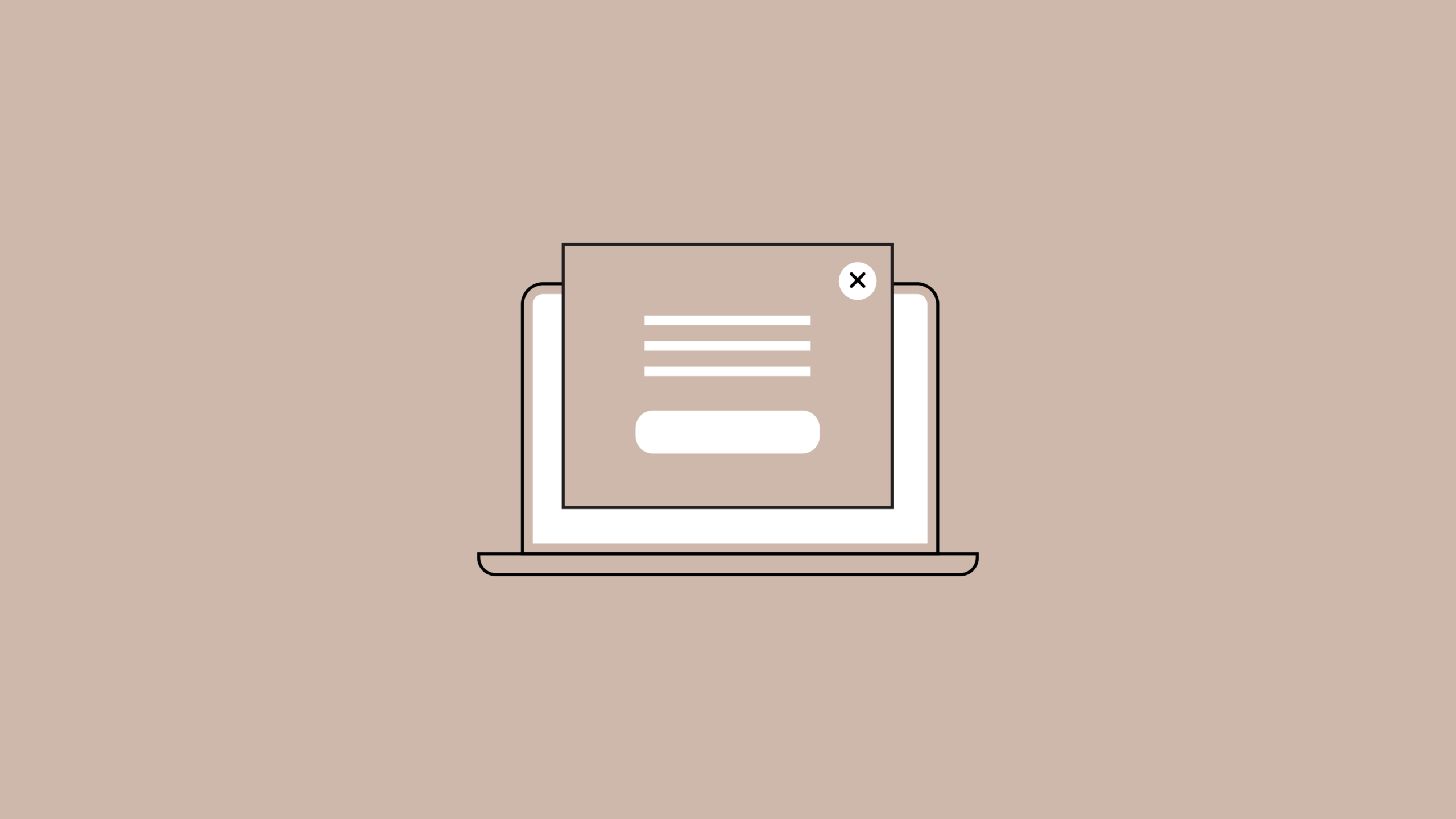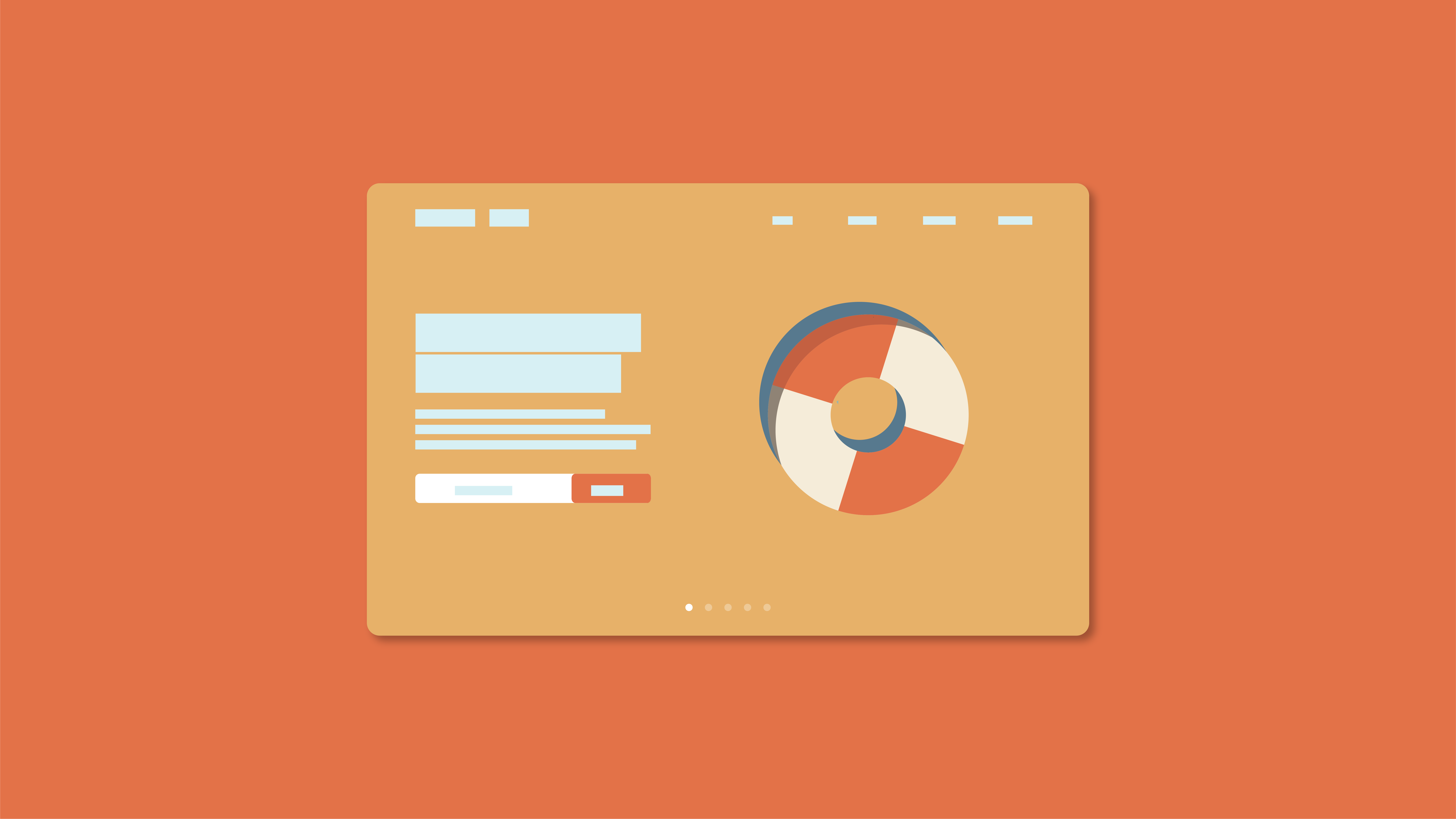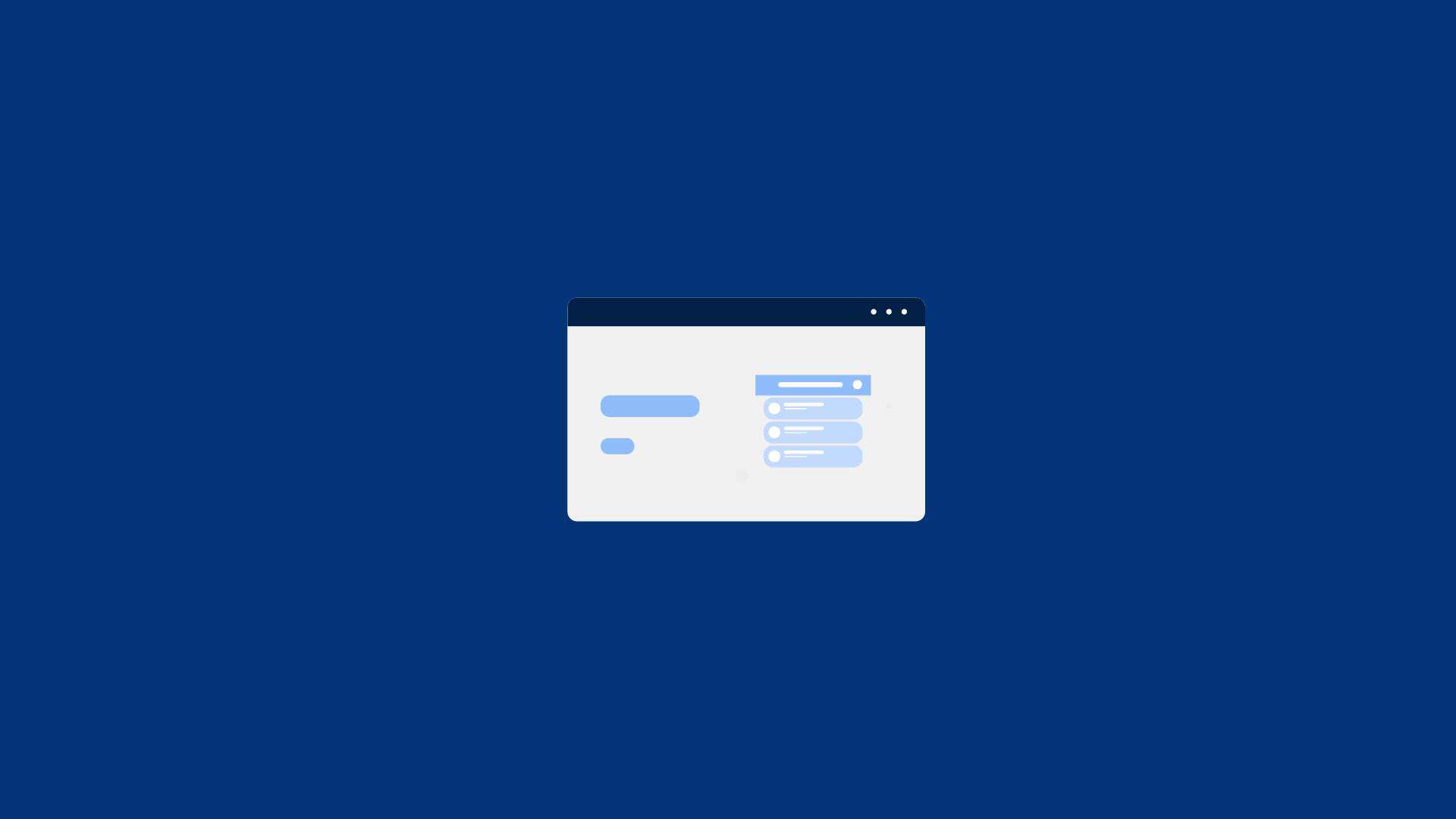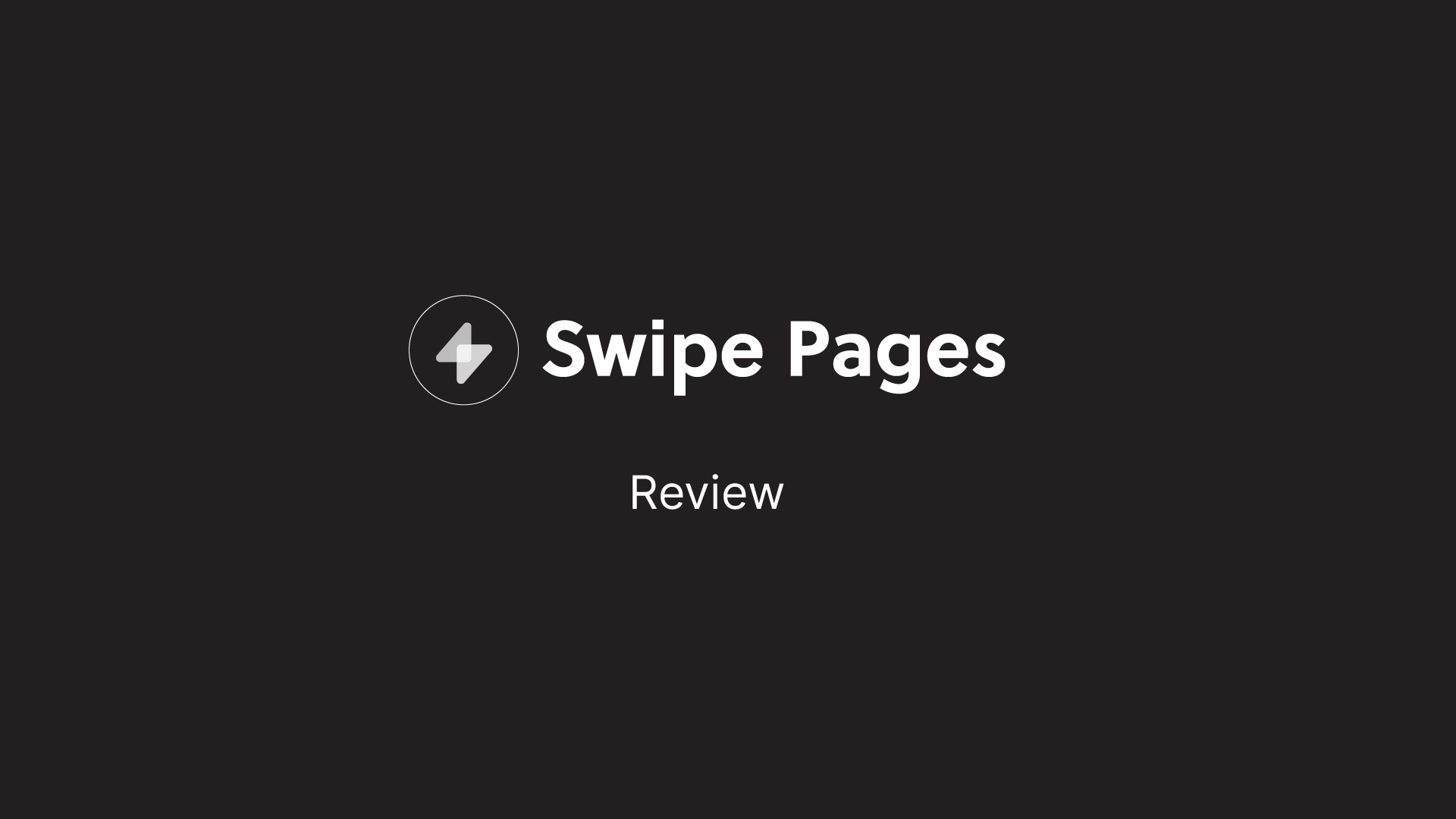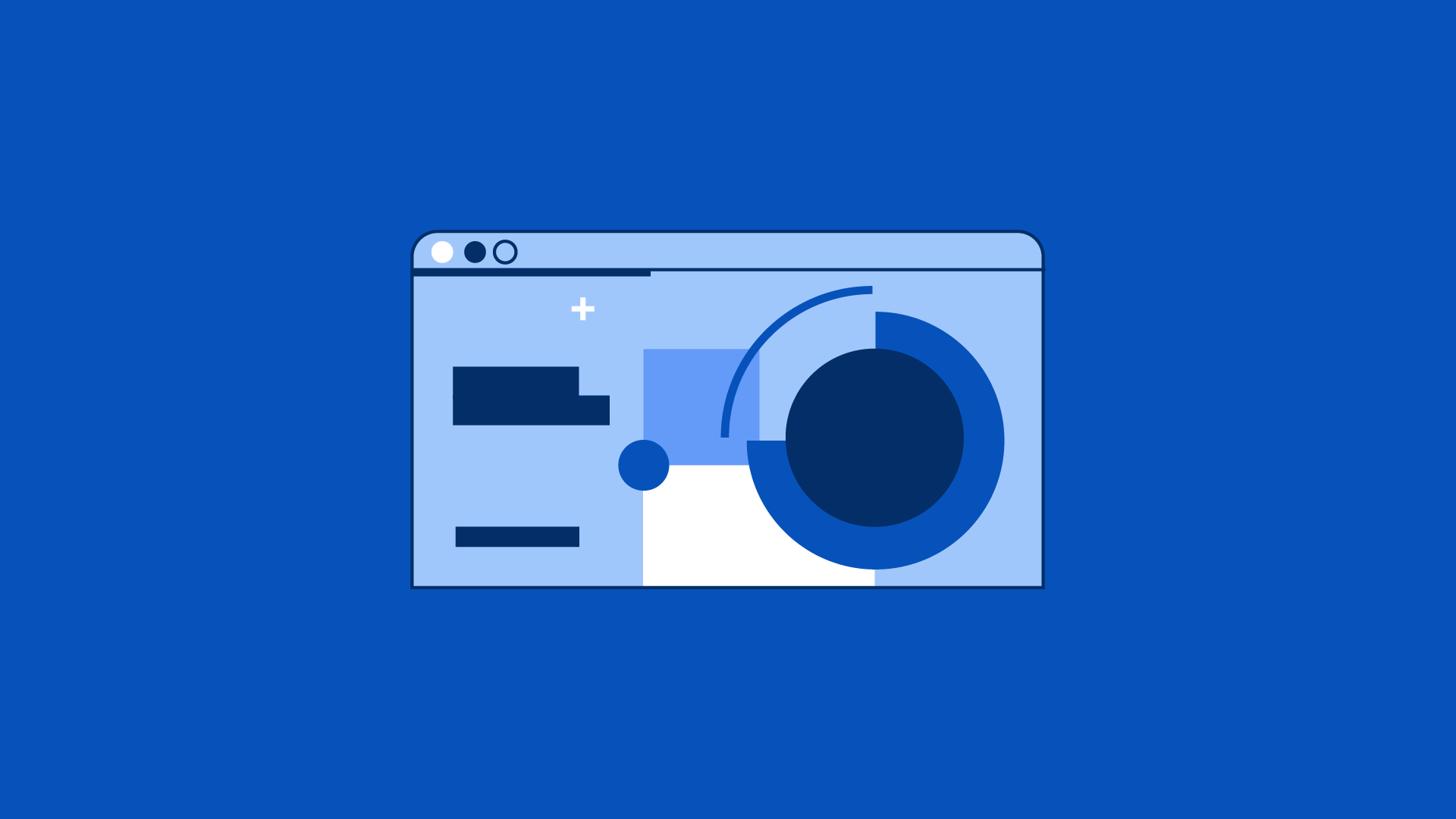What landing page statistics should I be tracking?
The importance of a well-designed landing page cannot be overstated. If done correctly, with the right landing page software, it can drastically increase conversion rates and optimize your sales funnel.
Creating landing pages is a crucial component of lead generation strategies. Landing pages allow you to capture the contact details of new visitors once they reach your site. They are the gateway to turning web traffic into leads or sales. If you want to get the most out of these valuable clicks, you’ll need to optimize them properly.
In this article, I share a comprehensive guide to the top landing page stats you should know.

What is a Landing Page?
Landing pages are designed to attract potential customers or clients and give them a reason to click over to your website. They can also increase conversion rates by having clear call-to-actions (CTAs) and relevant content. There are several ways to measure landing page performance, including landing page statistics.
Table of Contents
General Landing Page Statistics
Landing Page Conversion Rate Statistics
Landing Page Creation Statistics
Landing Page Lead Generation Statistics
Landing Page Testing Statistics
Landing Page Trends for Marketing Experts
Here is an overview of some of the key metrics you’ll need to track, from page load time to conversion rates. This article covers all of the important statistics for every type of landing page to ensure you’re optimizing for maximum conversions.
1. 61% of online marketers say generating traffic and leads is their biggest challenge.
Increasing organic traffic and leads is usually the top priority for most marketing professionals. Lead nurturing statistics show that it’s also their biggest challenge. To help marketers overcome this challenge, we’ve ranked the best lead generation software on the market.
2. Only 50% of landing pages are optimized for mobile.
As smartphones continue to improve, the world becomes more mobile-savvy by the day. Consumers search for products online, communicate with companies online, and buy products online.
If you’re not optimizing your landing pages for mobile viewing, you should start doing so as soon as possible.
Dynamic landing pages enhance user experience by automatically adapting their content and layout based on individual user data, leading to higher engagement and improved conversion rates.
3. Company branding in the title tag will remain a popular landing page tactic.
You should optimize every page of your landing page for your brand—even the titles. According to research by NiftyMarketing, 66% of companies use the company name in the title tags.
It’s a small detail, but it can help boost brand awareness and work well as a landing page strategy.
4. Business consulting has the highest lead generation conversion rate at 27.4%.
There is a huge difference between sectors when it comes to lead generation and landing page conversion rates. For example, for vocation studies and job training, average landing page conversion rates are high at 6%.
They are also good sources of income for business consulting and travel at 5%. While the healthcare industry shows a relatively low rate (2.8%). Consultancy enjoys the highest landing page conversion rate at 27.4% while travel enjoys the second-highest at 26.5%.
5. Personalized CTAs in landing pages can lead to higher conversions.
As per HubSpot, personalized CTAs can convert 202% better as compared to a generic CTA.
Building and optimizing landing pages rely on a lot of factors. Not only do they need to be optimized to convert and show the right message, but they also rely upon a call-to-action (CTA).
Effective landing page optimization involves improving conversion rates through personalized CTAs, A/B testing, and user experience enhancement.
CTAs are often used to direct website visitors on where to take the next step in the conversion process.
We’ve all seen the generic, boring landing pages and quite frankly they do exactly what they say – they just leave us feeling a bit “blah”. We always go with our gut when it comes to buying anything and usually when something doesn’t meet our expectations, we somehow find a reason not to buy.
So, make sure to use words that invoke joy and anticipation for better conversion rates.
6. eBooks lead to 55% of landing page submissions on HubSpot
HubSpot studies found out that 55 percent of landing page submissions on the HubSpot platform can be attributed to eBooks.
Your eBook content is meant to educate and inform, but the landing page is where people can sign up for your email list. And that’ll be where you can use eBooks in tandem with your landing pages by offering them as a lead magnet and attracting more leads through your landing pages.
7. Landing pages that invoke joy and anticipation do better than bland landing pages.
A report by Unbounce suggested that landing pages with words that created a sense of anticipation and joy to their copy resulted in more conversions.
We’ve all seen the generic, boring landing pages and quite frankly they do exactly what they say – they just leave us feeling a bit “blah”. We always go with our gut when it comes to buying anything and usually when something doesn’t meet our expectations, we somehow find a reason not to buy.
So, make sure to use words that invoke joy and anticipation for better conversion rates.
8. Your form layout affects whether visitors choose to click on your landing page.
According to Marketing Experiments, 46% of marketing professionals believe that form layout influences whether visitors choose your landing page.
Even though this is an old statistic, it still holds true today. A key landing page statistic to consider is how form layout impacts conversion rates and overall performance.
The way your form is laid out determines whether visitors will complete the form and whether they will be good leads.
Landing Page Conversion Rate Statistics
9. Landing pages are the least popular type of sign-up form.
Landing pages have the highest conversion rate (23%), and 62.6% of leading landing pages already use them. Landing pages are used to obtain customer contact information so they can be nurtured. If you decide to include forms, the highest converting number of fields is three, with an average conversion ratio of 10%.
The most popular combinations use email address and name (7%) and email address and birthdate (5.7%).
10. The median conversion rate for agencies is 1.7%.
An agency has a high touch sale that involves the customer entering a lot of information, getting on a phone call, and spending $5,000 or more for service. Naturally, this creates friction, which probably is the reason for the low conversion rate.
11. The average landing page conversion rate across all industries is 9.7%.
Given that 10% is a benchmark for a good conversion rate, taking the time to create a landing page that carefully considers the interests of your target audience will benefit your business. Whether you sell SaaS or clothing, a higher conversion rate from landing pages means a longer list of leads to nurture into paying customers.
12. Personalized CTAs convert 202% better than default versions.
Consumers prefer personalization for two reasons: first, it ensures that they aren’t overwhelmed by irrelevant information that doesn’t pertain to their interests; second, it allows them to customize the content they receive. Given this, using personalized and targeted CTAs in landing pages will likely improve your conversion rates.
13. Addressing buyer concerns on landing pages increases conversions by up to 80%.
According to keynote speaker, Marcus Sheridan at the InBound 2019 Marketing event, the best thing a company can do for its landing pages is address customer concerns. For example, promising not to send spam to your client’s emails, or using their personal data for marketing purposes will increase your chances of success.
Promising customers that they had nothing to worry about allowed Marcus to improve his conversion rates by about 80%.
14. 55% of top landing page submissions on the HubSpot blog came from eBook offers.
If you have a website or blog that offers long-form instructional content and you want to distribute your content through eBooks, offering them as part of your landing page can increase your conversion rates.
15. Fewer links and navigation results in a higher landing page conversion rate.
According to HubSpot, the more navigation you add to your page, the less likely your visitors are to convert.
This includes top navigation items, sidebars, footers, social icons, and more. Basically, anything that might distract your visitors away from filling out the sign-up form should be avoided.
Unfortunately, the same research shows that up to 84% of landing pages have navigation, so you can take advantage of this by removing navigation from all of your landing pages and standing out among your competitors.
You’ll notice that many of the top websites on the internet have simple landing pages.
These pages capture your attention because they don’t contain any navigation or distracting content. These pages are designed to help you focus your attention on the offer placed in front of you.
Landing Page Creation Statistics
16. 30% of top landing pages use video content.
If you already use videos as a part of your online marketing, including them in your landing page strategy can improve your conversion rates. Video content can increase conversions by up to 86%,and 80% of video marketers claim that video has directly increased their sales.
17. Longer landing pages increase leads by 220% compared to ‘above the fold’ call-to-actions.
When working on a landing page design for B2B companies, most marketers prefer to place their call-to-action buttons right at the top of their landing pages so that potential leads see them immediately when they open the page.
However, it has been statistically proven that having a long landing page with a call-to-action button at the end works better. Why? Because users need to be able to trust you before they’re willing to buy from you.
Optimizing the primary landing page by focusing on key content in its hero section can significantly improve conversions. For example, ClickMechanic’s strategy of placing essential elements, like a quote form, prominently in the hero area led to a substantial increase in conversions.
Convince them with the quality of your content that you are worthy of their time, and they won’t pass by the call to action button anymore.
18. 36% of top landing pages have testimonials, 11% have reviews.
You likely already solicit reviews and testimonials from current customers. You can repurpose them to use on your own landing pages. These types of posts are usually considered the most authentic form of user-generated content (UGC) for brands, so they’re a good way to get people to trust you.
19. 80% of users are likely to read content that is combined with images.
Images do not really generate any calls to action (CTAs), but they definitely add value to your landing pages by adding visual appeal. Visual content has become increasingly popular among marketers, especially on social media platforms like Pinterest, Instagram and Snapchat. As podcasts and chat apps like Clubhouse are becoming more popular, who knows where else they might go.
20. Including your contact information can increase trust and conversions.
Including your contact information (email address, phone number, etc.) on your landing pages helps improve conversion rates in two ways.
First, by including your contact information on your webpages, users will feel more comfortable sharing their contact information with you. It shows a two-way relationship between you and the person you’re contacting.
Secondly, it gives you an easy way to contact your customers when they need help. Potential customers may not want to fill out a form, but may prefer to use a phone and call the number on your landing page.
21. Too many offers reduce landing page conversions by up to 266%.
According to Bluleadz’s statistics roundup, placing numerous offers on your landing page could reduce conversions by up 266%.
This shouldn’t be a big surprise to you because most people struggle to focus on more than one thing.
People are busy. A recent study has found that the average human attention span is about eight seconds. That’s about the same amount of time that a goldfish can focus on something.
When you overload your offers with too many different tiers or different ways for people to qualify, you’re likely to scare away potential customers, which will lower your conversion rate. It’s best to have just one attractive offer at any time.
22. Sign-forms in landing pages using “Submit” see a decrease of at least 3% in their conversion rates.
A recent study by Unbounce found that using intimidating language like “submit” decreases conversion rates by 3%.
Not only does the term “submit” intimidate visitors from providing their details, it also reminds them that they are entering information onto an internet form that can potentially be used maliciously.
Using bland and direct words like “Register” and “Download” don’t work well for landing page conversions.
Landing Page Lead Generation Statistics
23. Using marketing automation to nurture your prospects leads to 451% increase in qualified leads.
Email marketing for business-to-business (B2B) companies is all about providing a personalized experience to each customer. However, it is difficult to handle the workflow when having to contact a hundred potential clients and also respond to many prospects a day.
Marketing automation is a tool that helps businesses automate their marketing efforts. With an automated process for processing leads throughout the buyer’s journey, your sales team can spend more time dealing with things that require more immediate attention—like speeding up qualification processes for potential prospects.
24. 52.8% of people say they would give up video if the page loads faster on their mobile.
“Time is money” has never been truer than when it comes to the loading time of a landing page. If your web pages don’t load quickly enough, your business is likely to lose a lot of visitors, and therefore a lot in revenue.
If you want to avoid this, consider giving some aspects of the page up for speed. Most users would prefer you give them either a video (52.8%) or an animation (56.6%) to have a faster page load time.
25. More than 20% of businesses don’t have a landing page strategy.
Business is all about improving. If you don’t keep moving forward, your competitors may catch up to you and leave you behind. But you can’t just walk into the dark without a plan and a strategy; you need a plan for the journey. A landing page test strategy is one of those things that helps guide your B2B business forward and grow.
Landing Page Testing Statistics
26. 54% of top landing pages contain testimonials.
When buying something online, what do you do first? Look at the reviews on the product before buying it. Businesses use testimonials from happy clients to show off their products. If you have some good business partnerships that you’re proud of, don’t be shy—use them as an example of why people trust you and are happy with your services.
27. 33% of businesses have embedded a Google map on their landing page.
As a general rule, landing pages are targeted towards a specific group of people who may potentially fit the business’ target audience and ideal customer profile.
For example, if you’re a business selling air conditioners, you need to target the location where people live (your city, your town, your county) when creating your landing page. Embedding a Google map on the web pages will help reassure that these local customers will find you in Google faster.
28. 58% of companies use clickable graphics.
As the rise of visual-centered content has become increasingly evident, marketers will try their best at making users click on the page’s content. However, when it come to landing page conversion rates, using fewer buttons is better.
You don’t want anything to distract the person who might be interested in buying your product from pressing the call-action button. Clickable graphics aren’t necessarily bad; they’re just a bit tricky to manage. If you aren’t sure how to use it correctly, better test it out to make sure it doesn’t ruin the conversions.
29. Testing among companies has increased from 27% to 38%.
Improving conversion rates is a challenge for many B2B organizations. However, it is a complex problem, and it needs complex solutions. You cannot just simply change the landing page design and expect a boost in conversions.
You first need to get to know your audience, your buyer persona, your ICP, and only then define the best way to target them through constant testing and strategy evaluations. The more you find out about your customer, the higher the conversion will be.
30. Only 17% of marketers use landing page A/B tests to improve conversion rates.
A/B testing (also known as split testing) is one of the simplest ways to improve the conversion rates for your landing pages. It is based on testing two different versions of the landing page against two different groups of users and defining which one performs better.
The purpose of A / B testing is to find the best solutions that will bring maximum profits to your business. You can use A/B testing for any kind of marketing activity: email campaigns, UX designs, call scripts, etc.
Landing Page Practices
31. Optimization software for landing pages can increase conversions by 30% on average.
Optimization is always an important factor when it comes to driving traffic, but using optimization tools to perfect the landing page strategy is valuable when it comes to increasing conversions.
32. Having 10-12 landing pages increases leads by 55%.
HubSpot’s landing page survey found that utilizing multiple landing pages to achieve various marketing goals and optimize lead generation usually results in more leads and conversions. The more optimized pages businesses had, the more likely it was that they would find more customers.
With more landing pages, you can segment your traffic sources and target specific pages for different kinds or types of customers. Creating between 10 and 12 landing pages can increase your lead conversion rate by up to 55%. Companies with more than 40 landing pages can take their lead opportunities even further.
33. CRO Tools can offer up to 233% ROI on average.
A B2B Landing Page has multiple types of elements: buttons, links, pictures, videos, blogs, interactive flipbooks, and so on. It is quite difficult to keep up with everything at once. With the right CRO tools, the job, usually done manually, can be completed in a matter of seconds. Use it properly and you might get some good results back, like a 223% improvement in ROI.
Landing Page Trends for Marketing Experts
34. 48% of the top-ranking websites for local searches were found through Google Maps and organic search results.
Making sure your landing pages are optimized for both regular search engine queries and Google Maps searches increases the likelihood that they will appear in both types of search, which increases exposure and the possibility of getting more leads. If you also include links to landing pages in email ads, you’re ensuring exposure and visibility from multiple channels.
35. 48% of marketers build a new landing page for each marketing campaign.
Multiple offers kill conversions. The previous stats show all too well.
However, only 48% of marketing professionals follow the golden rule, which states: “one landing page, one offer.”
If you include this tip in the marketing strategy for your business, you automatically gain an advantage over half of your competitors.
36. More than half (50.3%) of searches on Google now end without a click on a result.
There’s not much that you can do about this measure (unless you’ve been appointed by the CEO of Google). Over the past few years, Google has made changes to its algorithm, making them more Google-oriented.
Nowadays, Google sends a huge number of search clicks to its own properties like YouTube, Google Maps, Google blogs, Google.com sub-domains, etc., creating a market dominance and rendering it impossible for other businesses or websites to compete for a higher ranking in the Google search.
Such a search monopoly makes it impossible to win a click when competing against such a giant as Google, especially in its territory.
37. Almost 60% of marketers agree that the most useful metric for the job is conversion rates.
According to a recent report, landing page conversion rate statistics are the most useful metric for evaluating performance among 58% of the best marketers using marketing automation software. However, only a little over half of the businesses that use landing pages actually test them to improve their conversion rates.
38. Conversion rates are higher by 3% on landing pages that do not ask visitors about their age.
One of the most important conversion rate optimization facts is asking visitors to share their ages directly negatively affects conversion rates. Many people feel that asking for their age is somewhat invasive to their privacy. Regardless of whether you agree with this statement, keep it in mind if you want to improve your conversion rates.
Takeaways
I hope that you found some of these stats useful and that they give you a better picture of what to measure on your landing page and why. When possible, you should try to track multiple metrics simultaneously. Test each one independently and compare the results to determine which ones are most effective for your landing page. To effectively build your landing page, use this list of the best landing page software, to find the best one for your brand.
Frequently Asked Questions
What is a landing page vs a website?
As opposed to homepages and websites, which are designed for exploration, landing pages are customized to a specific campaign or offer and guide visitors towards a single call to action. In short, landing pages are designed for conversion.
Do I need a website for a landing page?
You can have a landing page without a website since landing pages are individual, standalone pages. Plus, the tools to create landing pages no longer rely exclusively on technical knowledge, so you or anyone on your team can build a landing page, host it on a domain, and start converting your web traffic.
What is conversion rate optimization?
CRO is the process of increasing the percentage of your website visitors who proceed to take a pre-determined action. This action can involve becoming a customer, filling out a form, or anything in between. The entire CRO process is vast and complex. It involves understanding your users’ behavior, how and what actions they end up taking, as well as which goals your web page fails to achieve and why.
Sources
Hubspot¸Findstack, Growthmarketingpro, Truelist, Cience, Klientboost, Bloggingforge
Find what you need to grow better


